|
Some of the most interesting
housing in the Potteries can said to have been ‘planned’, or have been
influenced or shaped by a movement of some kind. Dresden was developed
to a plan devised by the Longton Freehold Land Society. Such
organisations came into existence during the 1840s, and following a
successful venture in Birmingham, the movement grew and was replicated
in other urban areas, including Stoke-on-Trent where in 1849 a North
Staffordshire Freehold Land Society was proposed. However, by the end
of the year Longton and Burslem separated from the North Staffordshire
movement to form their own independent societies.
The following year, the Longton Freehold
Land Society acquired its first estate – Spratslade Farm, half a mile
from Longton, for which it paid £5,000. In August of 1850, the society
launched a design competition for a masterplan for the site, and they
subsequently selected a scheme prepared by a Mr Higginbottom of
Longton and a Mr Hales of Cobridge. However, it later transpired that
the plan had been produced by Thomas Forrester a land surveyor of
Longton.
The site was divided into a series of streets, including
Taylor Street (now Rowland Street), Cobden Street, Villiers Street,
and Ricardo Street, and 190 plots. Although it is not clear as to how
the name Dresden was selected for the new community, by 1852, this was
its name, and it has been suggested that as Dresden in Germany was
famous for porcelain, it is this link with Stoke-on-Trent’s famous
industry that provided Dresden with its moniker.
Dresden contains an interesting mix of
small terraced properties, and larger villas, and also public houses
and shops. It is clear that when developing their estate, the society
were looking to develop a community, not simply build houses, an
approach reflected by the mixed approach that is encouraged by
Government today.
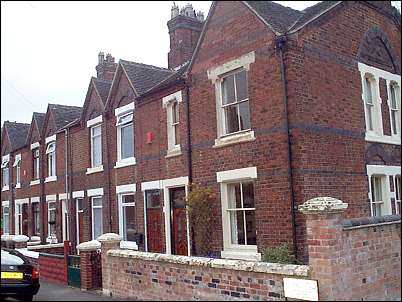
Terraced housing Rowland Street, Dresden
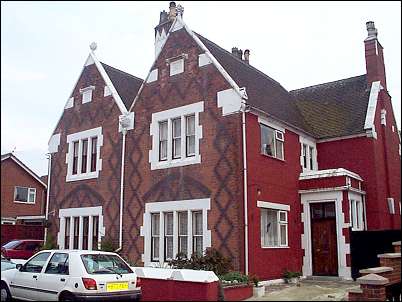
Nos. 2 and 4 Rowland Street, Dresden
Peel Street, named after the founder of
the Conservative Party and former British Prime Minister, Sir Robert
Peel, contains some exceptional terraced housing that also provided
private outdoor space both to the front and to the rear of the
properties, something which was quite rare at the time.
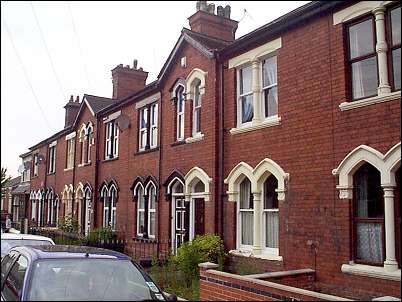
Peel Street, Dresden
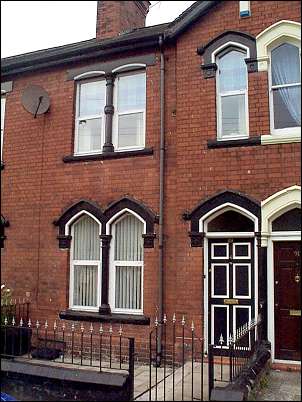
Private Outdoor Space
|
One of the city’s finest residential
properties can be found on Ricardo Street, which was described as the
“best street in Dresden”. Number 53 Ricardo Street, or Moneta House as
it is known, was built in 1865 to a design by Nottingham-based
architect R C Sutton. Constructed of red and yellow brick ornamented
with stonework, the villa is characterised by its prominent and
distinctive tower, and indeed, the house is often called the ‘Tower
House’.
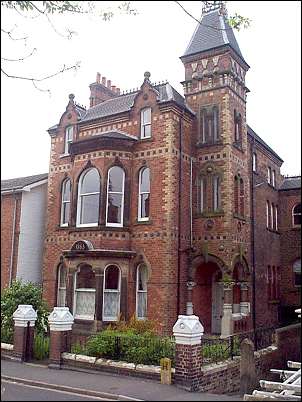
53 Ricardo Street,
or Moneta House
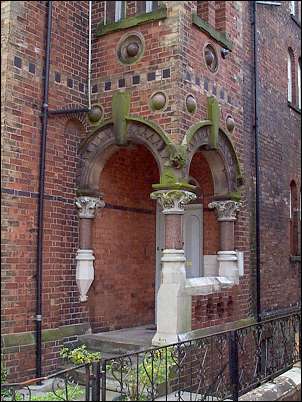
Entrance to Moneta House |
Another movement of sorts has provided
the Potteries with a fine architectural legacy over in Oakhill. Around
the time that the Longton Freehold Land Society was engineering the
community of Dresden, a number of prominent Potteries residents
grouped themselves together to form the Stokeville Building Society,
in order to provide the means and financial capability for the members
to build and own houses on land provided by the Rev. Thomas Minton,
brother of the potter, Herbert Minton.
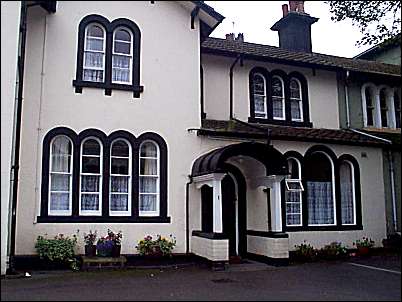
no 1 The
Villas
The society appointed prominent local architect, Charles Lynam who
went on to serve as the Borough Surveyor and build a number of local
public buildings, such as Stoke Library and the North Staffordshire
Infirmary. Lynam was only 21 years old at the time, and between 1851
and 1855 he built an estate of 24 dwellings in an Italianate-style,
mirroring the approach at Alton Railway Station and Trentham Hall.
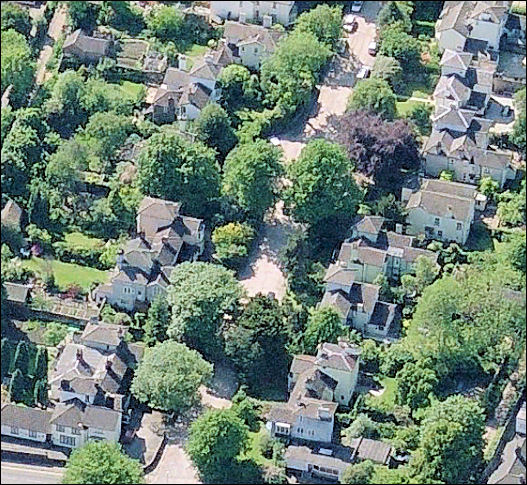
The Villas and their mature, green setting
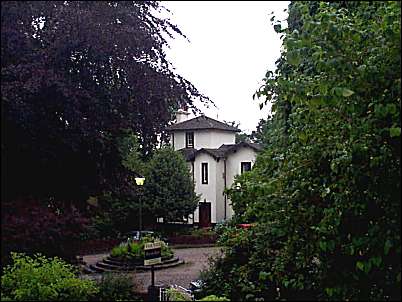
No. 5 the Villas
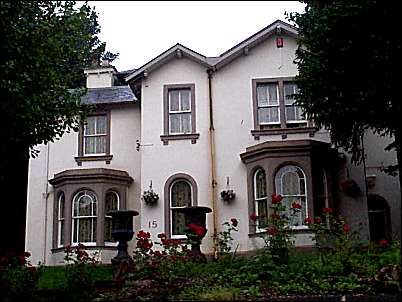
No. 15 the Villas
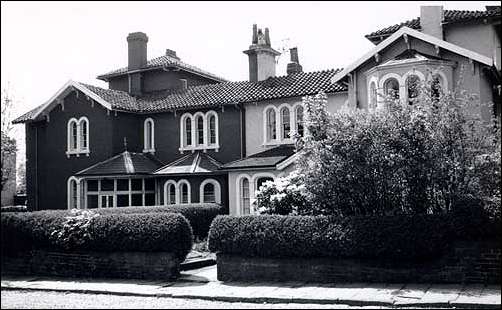
Nos. 3 and 4 the Villas in 1980
The
Villas was designated the city’s first Conservation Area, and also has the
city’s highest concentration of Listed Buildings, and although some of the
properties are not in the best of condition these days, they have a very
active residents association who have given themselves the name of the
Stokeville Building Society, after the organisation responsible for the
estate’s development
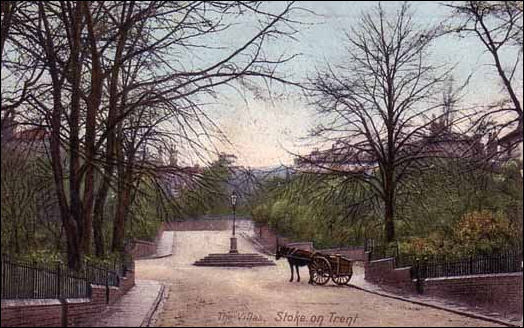
Postcard of the Villas
note the lamppost which resident Charles Machin – the famous stamp designer – chained himself to when the
Council proposed to replace it in the 1950s
|
![]()
![]()
![]()